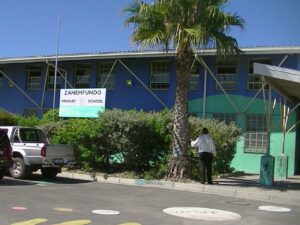[imagesource: Pexels]
We live in an age where most people grab their phones immediately after waking up. Facebook, Instagram, whatever your social media poison is – and let’s not forget about EskomSePush.
It’s always good to know when, and for how many hours, you’ll be without power for the day.
The end of a load shedding shift is a welcome relief, but we should all make sure we’re taking a few precautions given what’s been happening up in Jozi.
As if that deranged arsonist targeting the city’s upmarket northern suburbs isn’t bad enough, homes are now going up in flames due to power surges post-load shedding.
TimesLIVE is on the case:
A large thatched-roof house in Joburg’s Parkview caught fire just after midday on Monday and burnt down in what firefighters suspect was a case of “load-shedding electrical shock”.
“That is what we believe it was at this stage. There was also another one like it in Soweto also on Monday,” said Robert Mulaudzi, spokesperson for Johannesburg’s Emergency Management Services.
Sure, it’s an unwelcome effort to go around turning off plug points during load shedding.
You might be glad you did in the long run, especially if you’re not at home when the power returns:
When the power comes back on, there is often a surge of power, and this can cause appliances to blow or plugs to explode, resulting in a fire.
In the case of Monday’s fire in Hillcrest Road, Mulaudzi said nobody was present when the house caught fire. By late afternoon firefighters were still on the scene, spraying down the blackened thatch.
Independent fire investigator Danny Joubert backed up what Mulaudzi had to say, having investigated a separate case this week which wrecked an entire house.
A word of warning to those of you (or us, because I’m guilty of it, too) who opt to save a few Randelas when purchasing multiplugs:
“When you need a multiplug you go to Checkers and you will find one for R300, one for R200 and one for R79. So you buy the one for R79, not knowing that it’s cheap components are made of the thinnest wiring that can’t hold up in an electrical surge,” Joubert explained, adding people often then plug appliances that draw large amounts of power — such as fridges, microwaves, kettles and hairdryers — into the multiplugs…
Joubert explained that a fridge or freezer will warm up during load shedding times, and then start sucking lots of amps when the power returns.
A combination of a power surge and that high power draw can result in cheaper multiplugs bursting into flames.
There really is no harm in switching off various plug points at the wall when we know the load shedding schedule, which has been pretty damn accurate in my neck of the woods.
I always leave one light on, so I’m not that plonker sitting in the dark for no reason if load shedding ends earlier than expected, with plug points where major appliances are drawing from turned off.
Just a suggestion – use it, don’t use it, and so on.
[source:timeslive]





